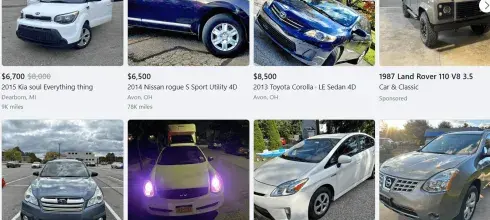
The Impact of Hurricanes on Car Shipping
If you’re thinking about booking car shipping services, you’re probably wondering what factors influence shipping prices and transport times. The type of vehicle you want to ship, its location, and whether it’s running all impact car shipping prices. In addition, the weather can also make a huge difference.
In this post, we’re going to explore the impact of hurricanes on car shipping along with other extreme weather conditions such as flooding.
Severe weather conditions in the US
The United States has a reputation for its diverse climates and weather conditions. Southern coastal states experience high temperatures and at the same time, it could be freezing in the northern parts of the country. In the north, rain, and snow start early in the winter and continue until early April.
Different areas of the country experience different severe weather conditions. In the Gulf states, hurricanes are common. Along the Atlantic coastline, thunderstorms, wildfires, snowstorms, and floods are common.
Such hostile conditions can cause serious damage, particularly when it comes to the auto transport industry and its many carriers. Some areas are considered extremely dangerous at certain times of the year.
The impact of hurricanes and other severe weather conditions on vehicle carriers
Bad weather conditions can result in devastating outcomes. Here are some examples of how hurricanes and other weather can affect a carrier that is shipping cars.
Cut off roads
Cut-off roads are more common during strong snowstorms, after floods hit an area, or when a wildfire occurs. When any of these occur, a location could potentially become inaccessible, which can hinder the transportation process.
Such events are often out of the hands of any human. However, a reliable carrier will try to find alternative routes. Companies that have been operating in the industry for many years will have contingency plans in place to tackle such situations.
In general, severe weather conditions can be somewhat predictable, such as tropical storms and hurricanes. These make it easier for a car shipping company to prepare. In most cases, the company will keep a close eye on the weather, and listen out for warnings and announcements provided by local authorities.
Slippery roads
In areas where snow and snowstorms are common, another danger for carriers to be aware of is slippery roads. When thin ice forms on roads it makes them slippery and dangerous to drive on, especially when the terrain is steep.
If roads are particularly slippery, carriers may choose to use tire treads or chains. These help the vehicle grip the road and allow the driver to slow down and stop the vehicle when necessary.
Fog and intense smoke
Heavy fog is a weather condition that affects visibility, making it dangerous to drive. When it’s foggy, drivers must slow down and pay close attention to the road to avoid traffic accidents.
Smoke can be a problem in areas where wildfires spread. During such natural phenomena, driving through these areas can be unsafe. Cars being transported could be damaged by embers and visibility makes driving unsafe. A responsible carrier will wait until the wildfire has been put out before driving through the area.
Snow and ice
Drivers of car transporters can be seriously affected by snow and ice. Weight can be a benefit when it comes to maintaining traction, however, icy roads are still extremely dangerous. Reroutes can be necessary during major snowstorms or lake-effect snows, particularly when they happen suddenly.
Lake effect snow occurs when cold air, often originating from Canada, moves across the open waters of the Great Lakes. When the cold air passes over the unfrozen and relatively warm waters of the Great Lakes, warmth and moisture are transferred to the lowest portion of the atmosphere. The air rises, clouds form, and grow into a narrow band that produces two to three inches of snow per hour.
It’s very easy to predict and prepare for weather such as lake-effect snow. Carriers who have been serving the Great Lakes area and the northern US states understand how to drive safely in snow and prepare accordingly.
This doesn’t mean all goes according to plan. Sometimes pick-up and delivery locations are not accessible and customers need to meet the carrier elsewhere. Ultimately, it can lead to delays, especially in areas that are too dangerous for carriers.
Hurricanes and tropical storms
Hurricanes and tropical storms can also be prepared for. Hurricane and tropical storm weather warnings are usually early which allows most people to prepare for them or evacuate if they strike.
Hurricanes and tropical storms tend to form out at sea and it’s crucial to be able to forecast when they’re going to make landfall. Such warning systems have allowed us to build coastal communities without fear of mass death.
Property loss can still be severe, but advance warnings of hurricanes allow people to live in Florida, for example, to be able to escape the next major hurricane.
Such warning systems are also great news for carriers who operate in these hurricane and tropical storm areas. It is useful for them to know if a hurricane is heading for Texas, Florida, or any other Gulf state. They can then incorporate such information into the routes they choose.
If a carrier knows a hurricane is heading for Miami within the next week, they can avoid that area. Once the danger has passed, they’ll be able to travel there again.
Hurricanes and tropical storms can seriously damage transport trucks and cargo. There have been stories of carriers being caught in hurricanes and losing all their cargo. Dangers like these can be avoided by paying higher prices, having longer transit times, and shifting delivery dates.
Flash floods
Flash floods often occur after there have been heavy rains. Unlike hurricanes and storms they are unpredictable. This makes it more difficult to prepare for them.
If carriers are traveling to areas where there is a possibility of flash floods or floods are expected, they keep an eye on weather reports.
Flash floods can be very dangerous if they appear out of nowhere. If a vehicle carrier’s truck is swept along by floodwaters it could mean the entire shipment is lost. Carriers usually try to avoid these areas as much as possible. The impact of flood conditions can also make driving difficult because of muddy surfaces and washouts. Delays can be the result of flooding.
What are the ultimate impacts of hurricanes and floods?
Car shipping services can be impacted in one of two ways:
Increased rates
Rates may well be higher at times of the year when the weather is expected to be worse. Car shipping rates also depend on particular locations and expected routes. If weather prevents a driver from taking their planned route, an alternative route must be taken.
Such a change in route could affect the pick-up of other vehicles. In addition, winter is a season for snow and ice. It’s also snowbird season and the time when many people, drivers included, take time off for holidays. This increases traffic on the highways.
Delays
During times of bad weather, the safety of your car and every other vehicle on the trailer remains a top priority. However, when the weather is bad, the likelihood of an accident increases.
Therefore, drivers choose to drive slower or wait until it’s safe to continue on their journey. This may mean your pick-up or delivery date gets pushed back a few days.
This may seem rather inconvenient but what would you rather the driver do? Take risks or have your car delivered safely?
Is there anything you can do?
While there’s nothing you can do about the weather, there are some tips you can follow if you want the best auto transport experience possible.
Research the climate
Before you move to a new area check what the weather is like in that region. For example, is there a better time to move there? If you can wait until then, that would be the best solution.
- Hurricanes: This type of storm is most common on the Atlantic coast of the US. Hurricane season is from June to November.
- Wintry weather: The highest chance of snow is in the Northeastern part of the US. This includes states such as New York, Ohio, Pennsylvania, Maine, and Michigan. Some parts of the US can get snow as early as October and as late as April.
Choose between open and enclosed car shipping
There are two types of car shipping services to choose from: open car shipping and enclosed auto transport. In most cases, open car shipping will be more than adequate.
However, you should take into account the type of vehicle you own and the time of year you want to ship it.
An enclosed carrier will protect your vehicle from the weather and external elements. Would this better suit your needs? Enclosed auto transport is also the best option for classic, sports, custom, luxury, antique, and other expensive vehicles.
If you're thinking about booking a car shipping service, don’t let bad weather put you off. A reliable auto transport company like SGT Auto Transport will do everything in its power to ensure you experience a smooth and hassle-free service.
If you want to know how much it will cost to ship your car, use our instant quote calculator right here on this website.
Alternatively, you can speak directly with our shipping advisors on (864) 546-5038 or via Live Chat.







